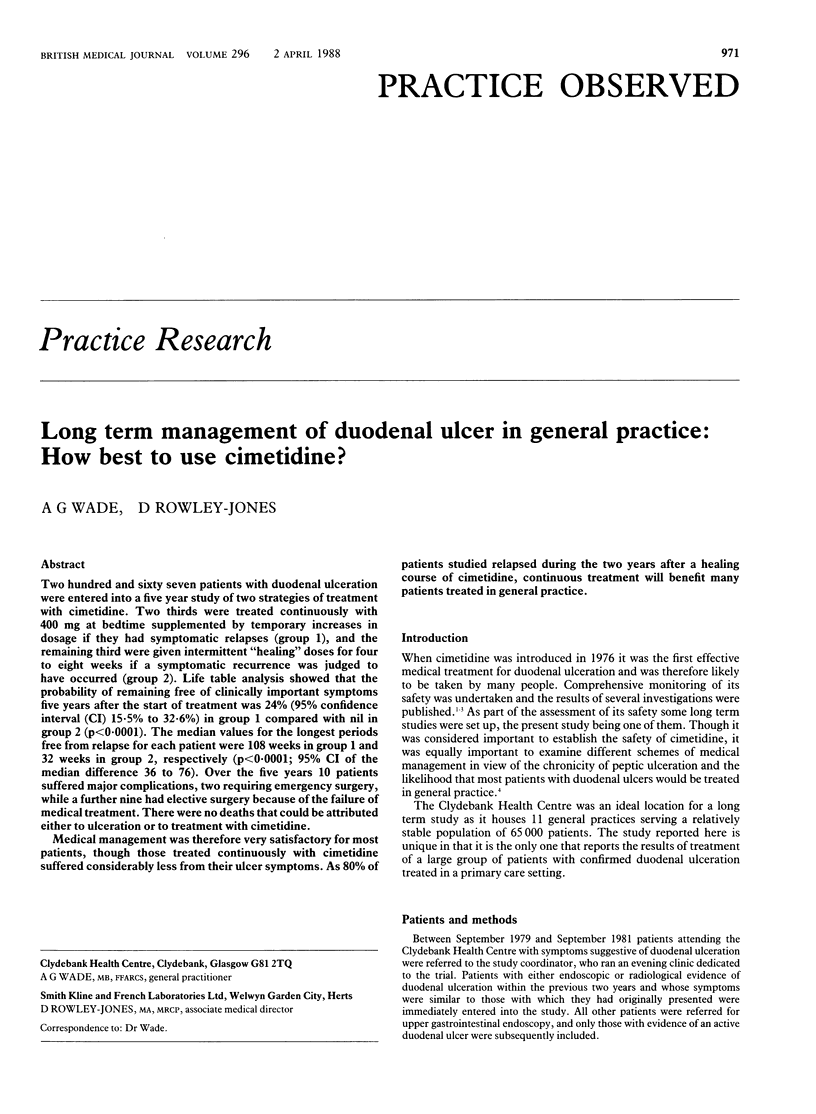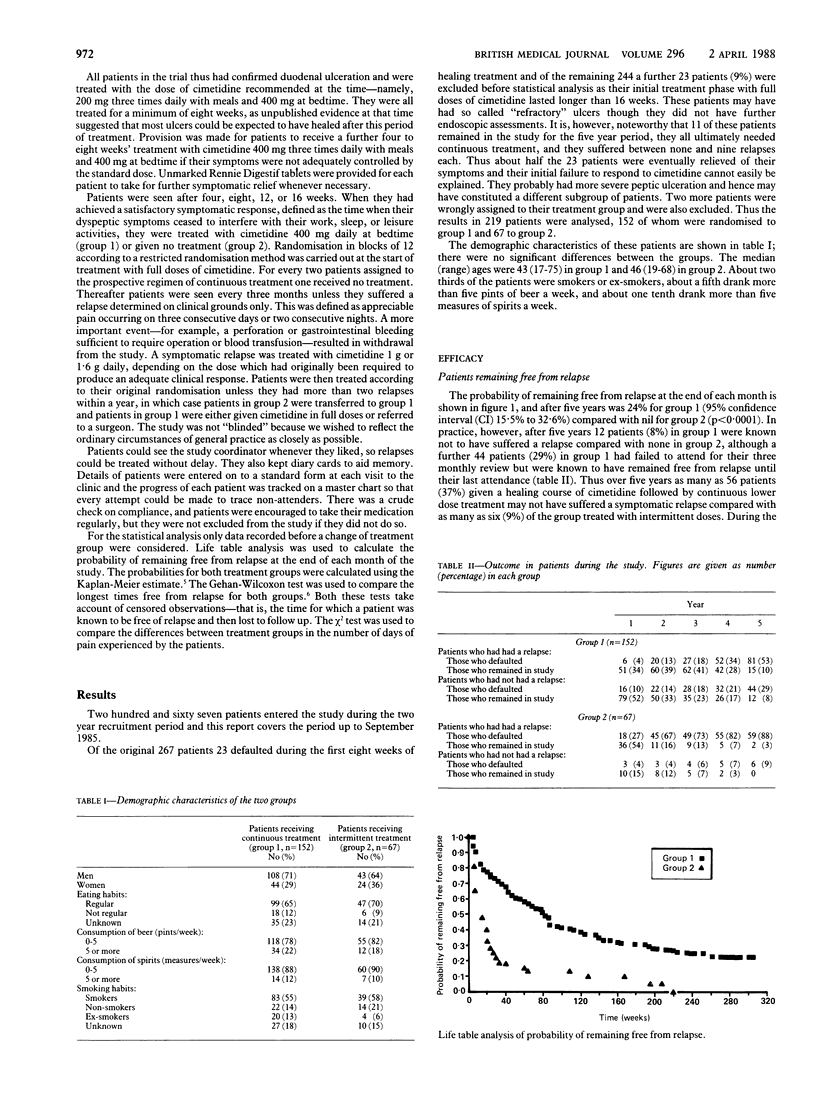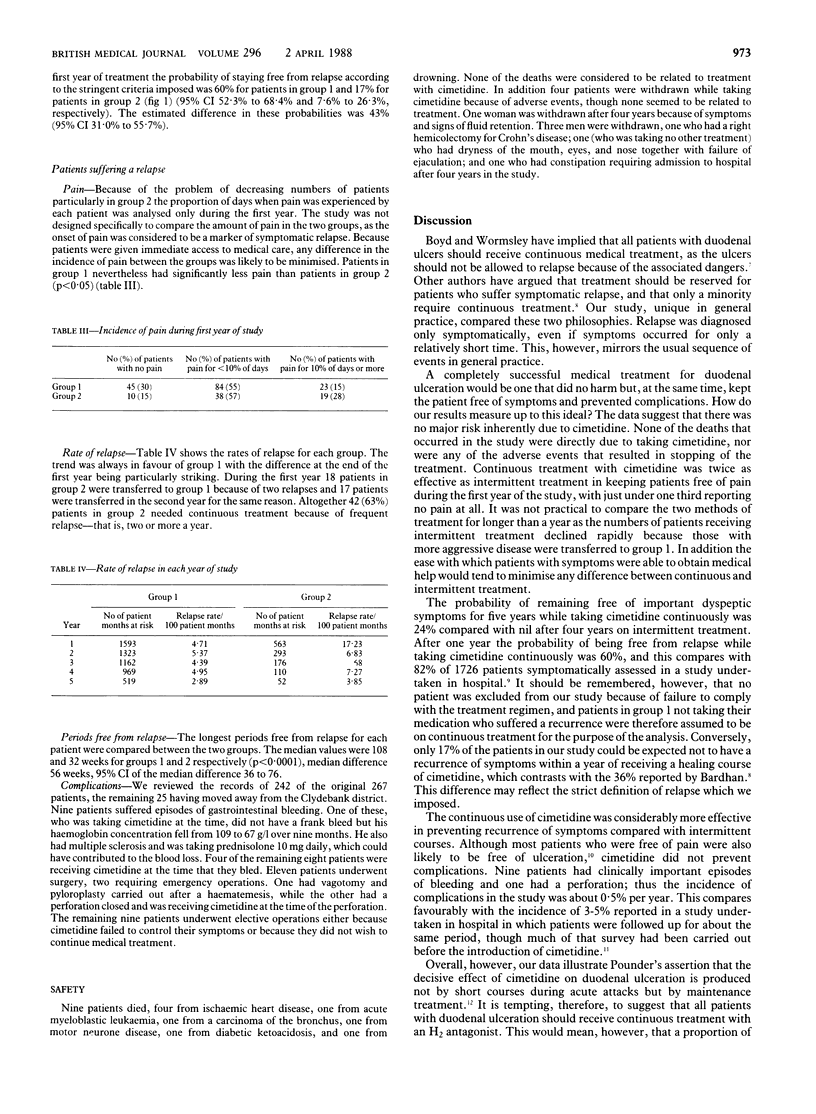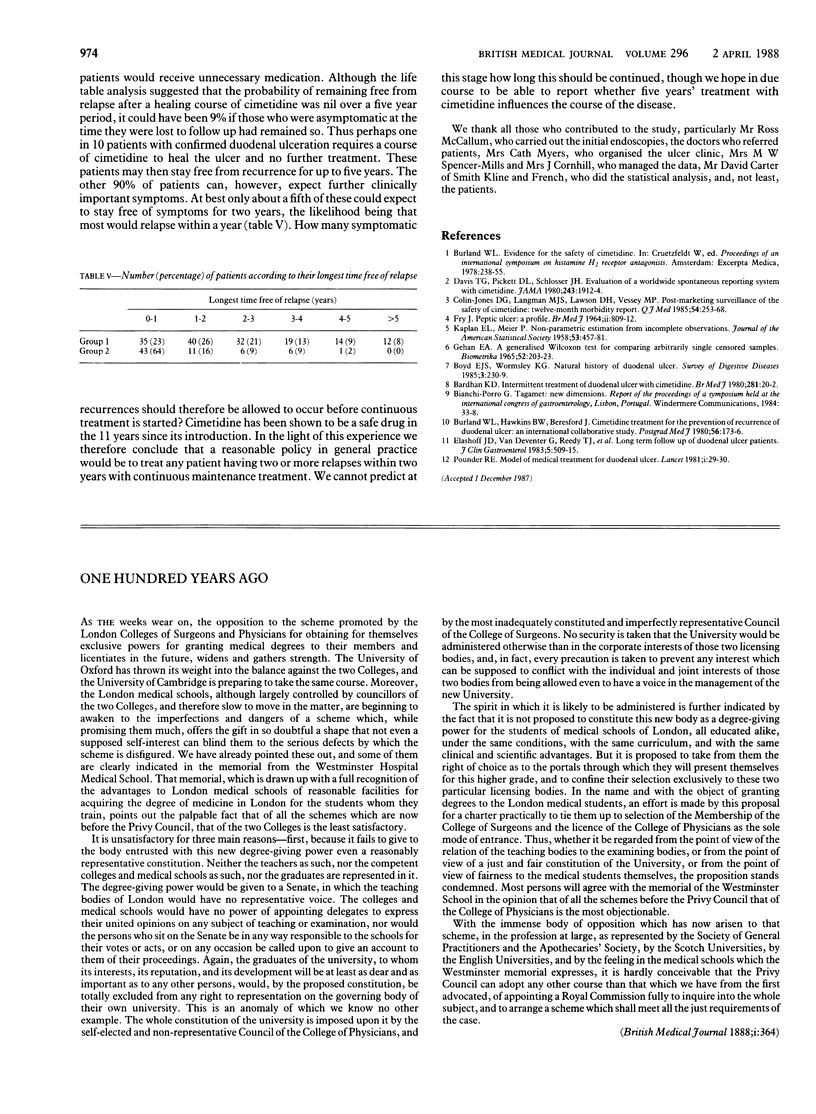Abstract
Two hundred and sixty seven patients with duodenal ulceration were entered into a five year study of two strategies of treatment with cimetidine. Two thirds were treated continuously with 400 mg at bedtime supplemented by temporary increases in dosage if they had symptomatic relapses (group 1), and the remaining third were given intermittent “healing” doses for four to eight weeks if a symptomatic recurrence was judged to have occurred (group 2). Life table analysis showed that the probability of remaining free of clinically important symptoms five years after the start of treatment was 24% (95% confidence interval (CI) 15·5% to 32·6%) in group 1 compared with nil in group 2 (p<0·0001). The median values for the longest periods free from relapse for each patient were 108 weeks in group 1 and 32 weeks in group 2, respectively (p<0·0001; 95% CI of the median difference 36 to 76). Over the five years 10 patients suffered major complications, two requiring emergency surgery, while a further nine had elective surgery because of the failure of medical treatment. There were no deaths that could be attributed either to ulceration or to treatment with cimetidine.
Medical management was therefore very satisfactory for most patients, though those treated continuously with cimetidine suffered considerably less from their ulcer symptoms. As 80% of patients studied relapsed during the two years after a healing course of cimetidine, continuous treatment will benefit many patients treated in general practice.
Full text
PDF



Selected References
These references are in PubMed. This may not be the complete list of references from this article.
- Bardhan K. D. Intermittent treatment of duodenal ulcer with cimetidine. Br Med J. 1980 Jul 5;281(6232):20–22. doi: 10.1136/bmj.281.6232.20. [DOI] [PMC free article] [PubMed] [Google Scholar]
- Burland W. L., Hawkins B. W., Beresford J. Cimetidine treatment for the prevention of recurrence of duodenal ulcer: an international collaborative study. Postgrad Med J. 1980 Mar;56(653):173–176. doi: 10.1136/pgmj.56.653.173. [DOI] [PMC free article] [PubMed] [Google Scholar]
- Colin Jones D. G., Langman M. J., Lawson D. H., Vessey M. P. Post-marketing surveillance of the safety of cimetidine: twelve-month morbidity report. Q J Med. 1985 Mar;54(215):253–268. [PubMed] [Google Scholar]
- Davis T. G., Pickett D. L., Schlosser J. H. Evaluation of a worldwide spontaneous reporting system with cimetidine. JAMA. 1980 May 16;243(19):1912–1914. [PubMed] [Google Scholar]
- Elashoff J. D., Van Deventer G., Reedy T. J., Ippoliti A., Samloff I. M., Kurata J., Billings M., Isenberg M. Long-term follow-up of duodenal ulcer patients. J Clin Gastroenterol. 1983 Dec;5(6):509–515. doi: 10.1097/00004836-198312000-00008. [DOI] [PubMed] [Google Scholar]
- FRY J. PEPTIC ULCER: A PROFILE. Br Med J. 1964 Sep 26;2(5412):809–812. doi: 10.1136/bmj.2.5412.809. [DOI] [PMC free article] [PubMed] [Google Scholar]
- GEHAN E. A. A GENERALIZED WILCOXON TEST FOR COMPARING ARBITRARILY SINGLY-CENSORED SAMPLES. Biometrika. 1965 Jun;52:203–223. [PubMed] [Google Scholar]
- Pounder R. E. Model of medical treatment for duodenal ulcer. Lancet. 1981 Jan 3;1(8210):29–30. doi: 10.1016/s0140-6736(81)90128-8. [DOI] [PubMed] [Google Scholar]


